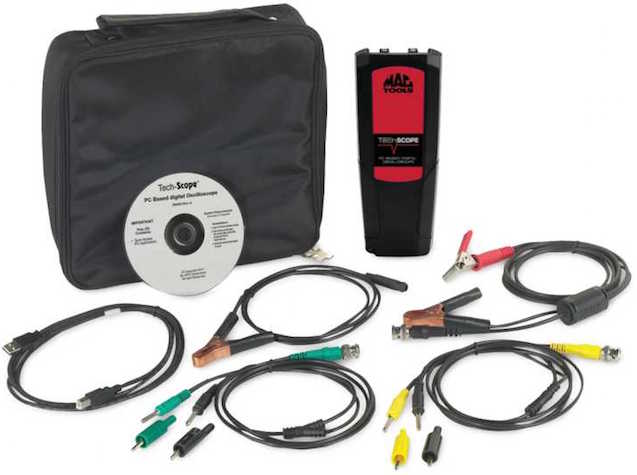

The sensors that monitor fuel, electronic, and mechanic components that power today's modern vehicles are leading candidates for most problems that stimulate a phone call from a customer to an ASE certified mechanic. Whether the sensor is broken, has an electrical connection issue, or has become dirty, most mechanics will agree that sensor failures make up the majority of their diagnostic examinations and repairs. It's also a statement of fact that a sensor issue may be extremely difficult to diagnose with standard testing equipment. One of the best tools that mechanics utilize to diagnose sensor failures and pinpoint the precise location of the failure is an automotive oscilloscope.

What is an automotive oscilloscope?
In general, an oscilloscope is an electrical machine that displays electronic waveforms that are being produced through an electrical circuit. Different than a standard voltmeter, the automotive oscilloscope is typically an LCD screen that is divided into equally sized squares that provides shows irregularities on the output signals produced by malfunctioning sensors, secondary ignition circuits, starter systems, intake manifold pressure, and charging currents from the vehicle's battery.
There are four primary types of automotive oscilloscopes used by today's mechanics to diagnose issues with sensors including:
- Analog oscilloscope: This older type of monitoring device has a cathode-ray tube screen that shows higher frequencies; however are less common in today's automotive world.
- Digital storage oscilloscope: This type of scope is used with a PC that allows the mechanic to display the electrical current, save the image, print, and examine it for individual problems.
- Multiple-trace oscilloscopes: This type of digital oscilloscope can be divided into three different output and input signals.
- The universal oscilloscope: The universal oscilloscope is commonly used in automotive applications to diagnose sensor issues, fuel injectors, ABS systems, fuel pump problems, compression tests, and more.
How does an automotive oscilloscope work?
An automotive oscilloscope is designed to find discrepancies that are very hard to find with the common diagnostic tools that most mechanics use. There is a precise process that mechanics use to attach and use an oscilloscope to find sensor issues:
- Hook up the oscilloscope to a laptop or desktop PC, if needed.
- Attach the oscilloscope to the sensor or injector that needs to be tested. It's important not to allow the probes of the oscilloscope to come into contact with other metal components and, and that it is connected to a ground before activating the scope.
- Start the vehicle engine to display the electrical traces. Although the oscilloscope is attached to only one of the sensors or injectors, the electrical traces of all sensors or injectors will be displayed on the screen. This allows the mechanic to find a discrepancy in an individual or group of sensors that will lead them to find the problem and make the appropriate repairs.
- The mechanic is able to review the electrical signals in real-time, and measure the amount of time of each electronic firing. This is essential when trying to diagnose a problem with any sensor; as it may be misfiring subtly – which is often missed by most standard diagnostic tools.
Having the flexibility to complete the automotive oscilloscope diagnostic examination in real time gives any mechanic an advantage over those that don't use this type of equipment. Most importantly, it helps mechanics expedite sensor failure repairs, allowing them to complete more work without wasting precious time or resources.
If you’re a certified mechanic and you’re interested in working with YourMechanic, submit an online application for an opportunity to become a mobile mechanic.



